A road bike frame is essentially three big tubes stuck together in a triangle, four thinner ones to support the rear wheel and a fork to hold the front wheel and allow it to turn.
But it’s a lot more subtle than that, with the lengths, angles and shapes of the tubes making a huge difference to how the bike rides, its aerodynamics and what it’s useful for. Those measurements add up to the bike’s geometry and can be tweaked by the designer to define the ride characteristics and fit of a road bike.
It’s important for the bike buyer to understand geometry, too. While all road bikes may look very similar at a quick glance, subtle changes in geometry can have a big impact on whether a bike is right for you.
Broadly speaking, road bikes can be grouped into two geometry categories: race and endurance. A race bike will have a more aggressive geometry for improved aerodynamics, while a bike with an endurance geometry (or ‘sportive’ geometry) will be shaped for comfort, with a more upright riding position.
Manufacturers will include a geometry table for each model on their websites. That includes measurements for each tube and angle that makes up the bike’s frame. It looks complex, but it’s useful to be able to decipher at least some of these numbers and their effect on your ride when shortlisting potential bikes to buy.
In this guide, we’ll explain why geometry matters, and provide an overview of the key measurements to look out for and the impact they have on the bike’s fit and handling.
We’ve also got a separate guide on road bike sizing, and an in-depth explainer on the nuances of mountain bike geometry.

Why is geometry important?

A bike’s geometry determines two very important things: how the bike handles and your position on it. At one extreme are bikes designed for racing. Their geometry will typically give you more edgy handling for a ride that’s more responsive. The ride position will usually be longer and lower too, flattening your back and giving you more of a bend at your hips.
That lowers your frontal profile for less wind resistance, lowers your centre of gravity, and weights the front wheel more to add traction, but may put more stress on your shoulders, arms, neck and wrists. You might find this tiring over longer distances.
Race bikes will often have steeper, twitchier steering angles and longer stems to enhance that aggressive feel further. Add shorter, stiffer rear ends and the increased use of deeper, often more rigid-feeling aerodynamic tube shapes, and you’re looking at bikes that are very fast and efficient, but potentially unforgiving on longer rides.
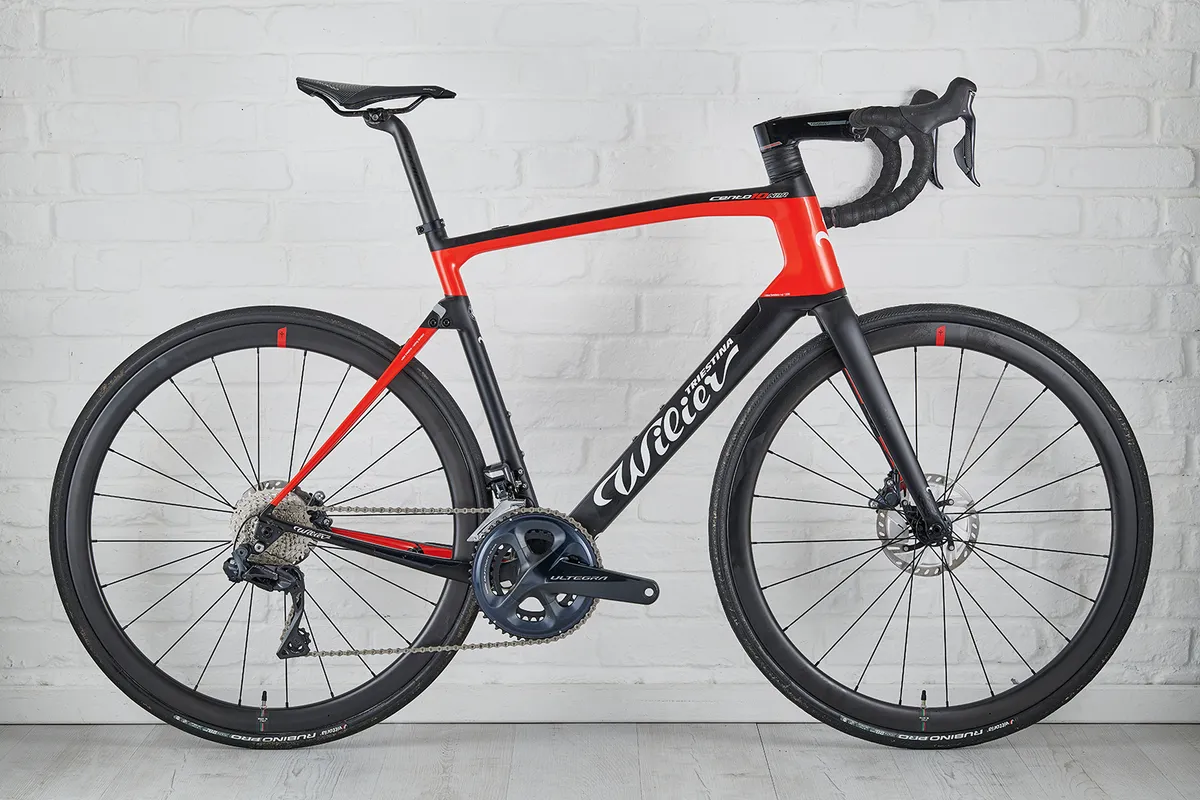
At the other extreme are endurance bikes. Their geometry favours stable, predictable handling and promotes a more upright riding position.
That’s good for comfort on longer rides, but means you’re less aerodynamic and the bike’s handling might not be as sharp. With the rider contributing around 80 per cent of the aerodynamic drag when cycling, you’re likely to be a bit slower too.
That’s not an absolute distinction and you’ll find pro-level race bikes that even a novice would be happy to ride all day, while some bikes labelled “endurance” will give you quite a sporty ride. So it’s important to hunt down reviews of the bikes you’re interested in and to test them yourself, to get an insight into their real-world riding characteristics.
- Best road bikes tested by BikeRadar
- Best mountain bikes tested by BikeRadar
- Best gravel bikes tested by BikeRadar
How to choose the 'right' geometry
We spoke to Claudio Salomoni of prestigious brand Wilier, and Dom Mason of Mason Cycles, one of the UK’s most experienced bike designers, to get their insights on how a bike rides and fits.
Despite the very different types of bikes they make, both emphasise the bike’s stack, which measures how tall a bike is, and its reach, which measures how stretched out the rider will be, as crucial measures of how a bike feels to ride (see below for more explanation).
Mason advises using a bike fit to establish the reach and stack that will work best for you, then looking at a few bikes with numbers close to those measurements.
When Wilier introduced its NDR endurance models, it increased the stack compared to its more racy frames, and also increased the length of the wheelbase for more stability. Salomoni says that it’s important to be honest with yourself about the type of riding you’ll want to do and your skill level. “Does a high end-racing bike really match your needs?” he asks.
Mason, meanwhile, emphasises the importance of not being too upright on the bike. “It’s not so good for acceleration and climbing if your arms are too high,” he says, so he prefers to keep the head tubes on his bikes a bit shorter.
Mason also highlights head-tube angle as an important determinant of handling. “This used to be quite steep, but with newer bikes designed for multi-surface riding and carrying luggage, a lower angle works better. It’s more confidence inspiring and handling is more dependable when cornering.”
How frame size affects geometry
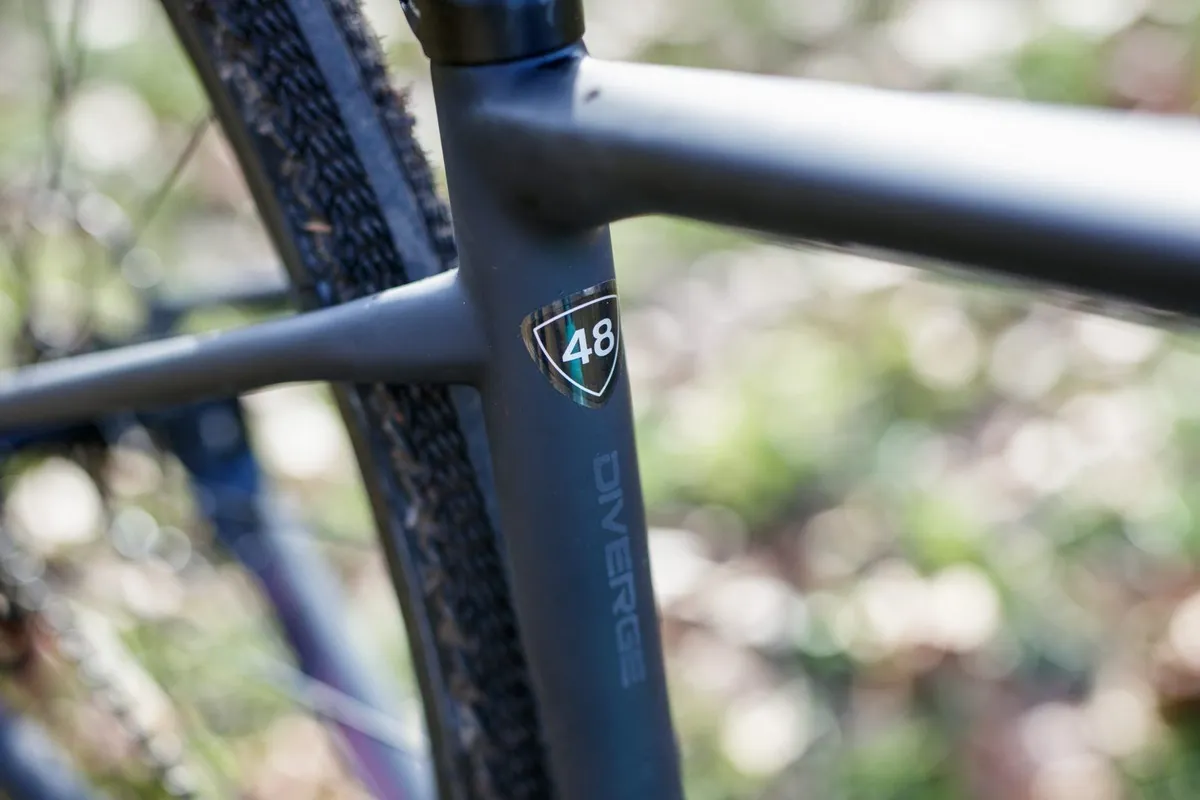
Besides longer tubes, there are more subtle effects of frame size on a bike's handling and geometry.
Since wheels stay the same size on the vast majority of road bikes, bike designers need to tweak other aspects of the bike so it will fit the rider. The most tricky is wheelbase; if it’s too short you’ll get toe overlap with the front wheel, which means that your foot might rub against the tyre as you turn.
Toe overlap doesn't make a bike dangerous or unridable, but if you have it you need to be cautious during low speed manoeuvres when you're turning the bars a long way off-centre.
Typically, the smallest sized frames have a slacker head tube (i.e. a lower number – there’s more explanation of these terms below) to ensure the wheelbase is long enough and toe overlap doesn’t happen.
It’s also why Canyon, for example, switches to smaller 650b wheels on its smaller sized bikes. It says that this allows it to keep handling more consistent across the size range.
Frame rigidity is also likely to be different between smaller frames with shorter tubes and larger ones with longer ones. Many bike brands have some variant of what Wilier calls ‘Balanced Design’, where tube sizes and wall thicknesses vary between frame sizes, for a more consistent ride feel.
Road bike geometry measurements and why they’re important
A typical geometry chart for a bike will include a wide range of measurements. Here’s a run-down of those you’ll usually find for a road bike and why they’re significant.
Seat tube length

It’s pretty self-explanatory, but not as useful a measure as it used to be, when top tubes were horizontal. The advent of sloping geometry (where the top tube slopes downwards towards the rear of the bike) and compact framesets mean the measured seat tube length is no longer a good indicator of frame size.
A sloping (or ‘compact’) frame will mean that you have a longer section of seatpost above the top of the frame. That leads to more opportunity for it to flex and potentially a more comfortable ride.
It’s often augmented by a carbon fibre seatpost and sometimes by a design aimed at providing more compliance, such Canyon’s VCLS split seatpost or Giant’s D-Fuse, which features a D-shaped cross-section to add rearward flex.
Top tube length
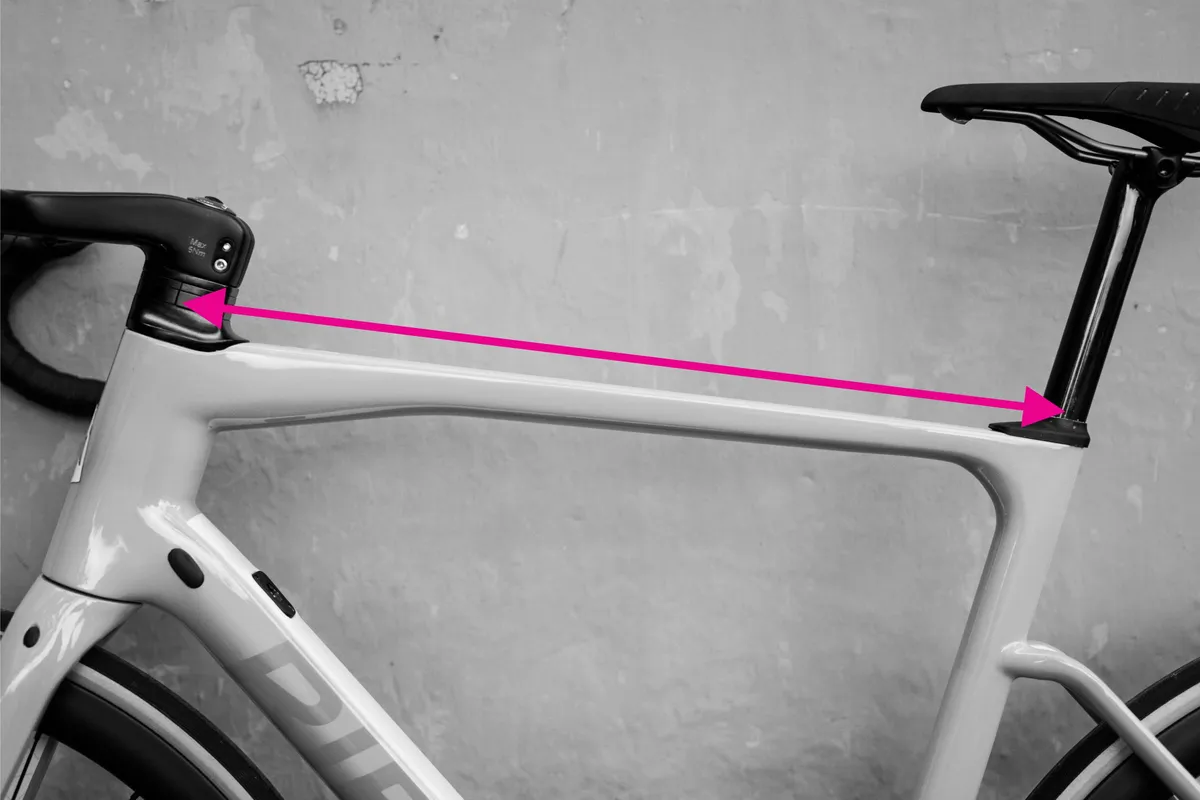
Like seat tube length, top tube length is affected by whether the frame has a compact or semi-compact geometry. If a bike has a sloping top tube, as the majority of the latest road bikes do, manufacturers may quote both top tube length and effective top tube length.
Effective top tube length is the more important consideration here and is measured in a horizontal line from the head tube to the seatpost, thus discounting the actual tube’s slope.
Top tube length has a big impact on the reach of a bike and, as a result, it’s fit. Too long and you’ll be overreaching for the handlebars, which could cause discomfort or adversely affect the handlings; too short and you may be cramped on the bike.
Endurance bikes tends to have a shorter top tube, combined with a taller head tube, while race bikes opt for a longer, lower position.
You can fine-tune a bike’s reach with the length of the stem, although this will usually be pre-determined by frame size when buying a bike, so changing to a different stem will cost you extra.
Reach and stack
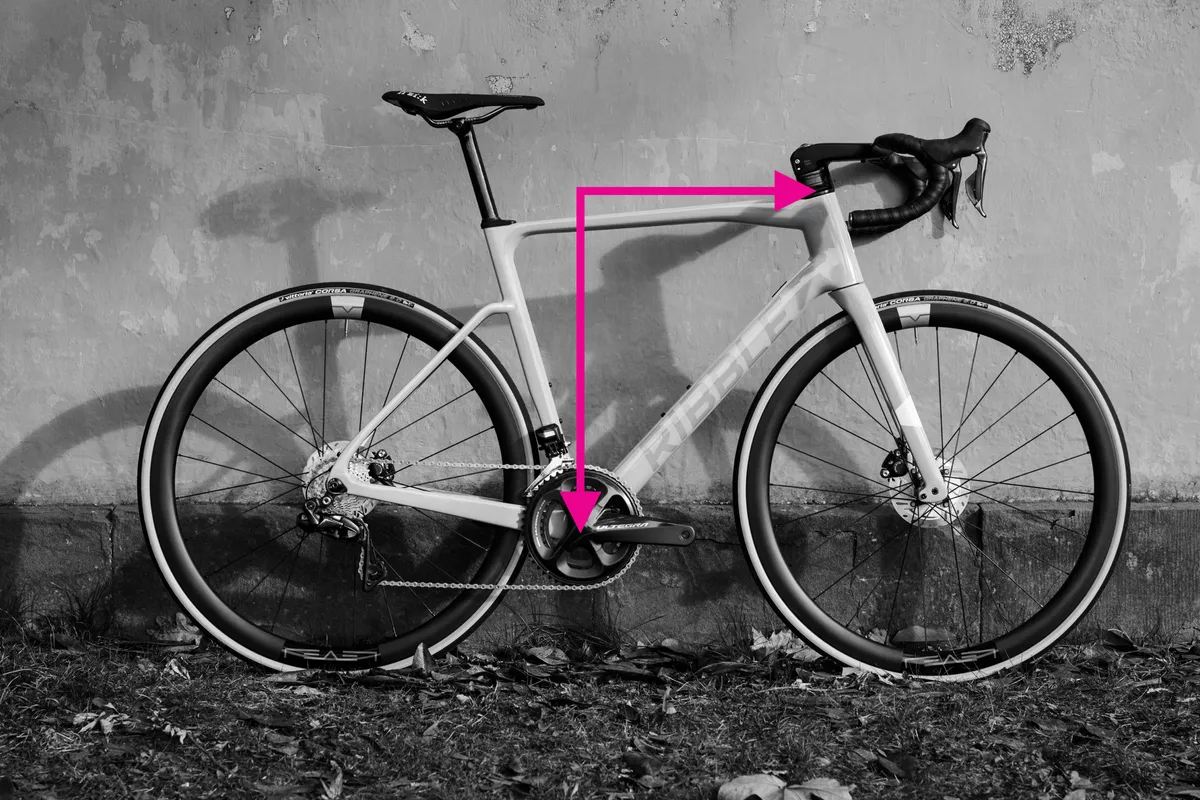
Most manufacturers will quote reach and stack numbers for their bikes. A bit more technical than tube lengths, the reach is the horizontal distance between the bottom bracket axle and the top of the head tube, and the stack is the vertical distance between them. Some manufacturers will include the headset in these measurements, which makes a small difference, so it's worth checking how they're measuring.
Reach and stack give you an absolute value for how your frame will fit (although things like stem length and spacers under it can be used to adjust this). Once you know your preferred reach and stack figures, it should be easy to compare one bike’s geometry to another.
In general, a higher stack will be paired with a shorter reach on a more comfort-focused endurance bike, while a lower stack and longer reach will make for a more racy ride position. As mentioned above, these are very useful measurements to determine how well a bike will fit you and the sort of riding it’s good for.
Wheelbase

The length of the bike’s wheelbase (the distance between the hubs of the two wheels) will affect how the bike handles.
A longer wheelbase will add stability, with endurance bikes typically over a metre. Racing bikes typically have a wheelbase under one metre (for a 56cm frame) for increased responsiveness.
Head tube length

Head tube length will determine how low you sit on the bike: a racier frame will tend to have a shorter head tube, while an endurance bike will have a taller one.
Taller head tubes (160mm or longer on a 56cm frame) naturally mean a higher cockpit position and, therefore, a more upright posture than a shorter head tube (140mm or lower).
Sitting more upright places less strain on hands, wrists, shoulders, neck and spine and creates a more relaxed ride but obviously creates more aero drag, which slows you down.
While head tube length is fixed, the height of the bars can be fine-tuned by adding or removing spacers from under the stem. We’ve got a guide on how to adjust handlebar height.
Wilier’s Salomoni points out that there’s no point in buying a bike with a short head tube then putting a large stack of spacers on top of it to raise your bars.
It doesn’t look pretty but, more importantly, handling may not be as crisp as a bike with a longer head tube and fewer spacers, which has a stiffer front-end as a result. There’s a 30mm difference in head tube length between Wilier’s race and endurance bikes, to let you sit more comfortably.
Head tube angle
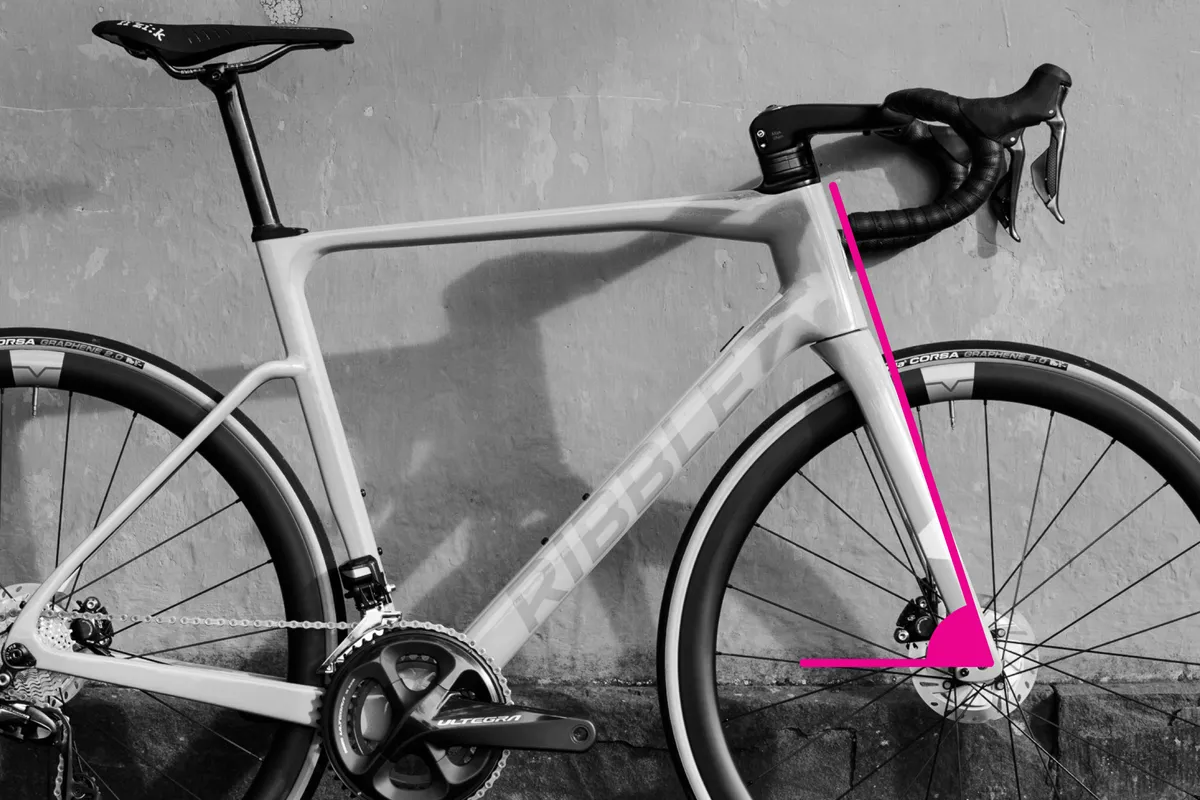
Another simple measure that hides a lot of complexity, head tube angle decides how far in front of you the front wheel is. Again, this affects stability: further in front (and thus a slacker head tube angle) will give calmer, slower steering.
However, the fork will also have a bend in it once it leaves the head tube and this too will affect handling, via the fork’s offset and the bike’s trail. It’s a complex area, but suffice to say that greater offset makes the bike more stable.
Head tube angle is particularly significant for mountain bikes and the trend over the past few years has been for shorter stems, longer wheelbases and slacker head angles. However, some endurance road bikes and gravel bikes have trended in this direction too, albeit to a lesser degree.
Seat tube angle

The seat tube angle measures the angle between the tube and horizontal. A steeper seat tube (around 73 degrees is typical for race bikes) will put you more over the pedals.
It’s a popular position for time trialists and triathletes, whose bikes tend to have very steep seat tube angles. It puts less strain on the thigh muscles in a ride position that is typically very low and held for long periods.
Mason points out that seat tube angles have increased (steepened) in modern mountain bike frames, so that the rear wheel is more tucked in, while Wilier’s Salomoni reports that pro road racers are increasingly moving their saddles forward to increase the effective angle, so it’s an area of bike design where we’re likely to see subtle changes in the future.
Chainstay length
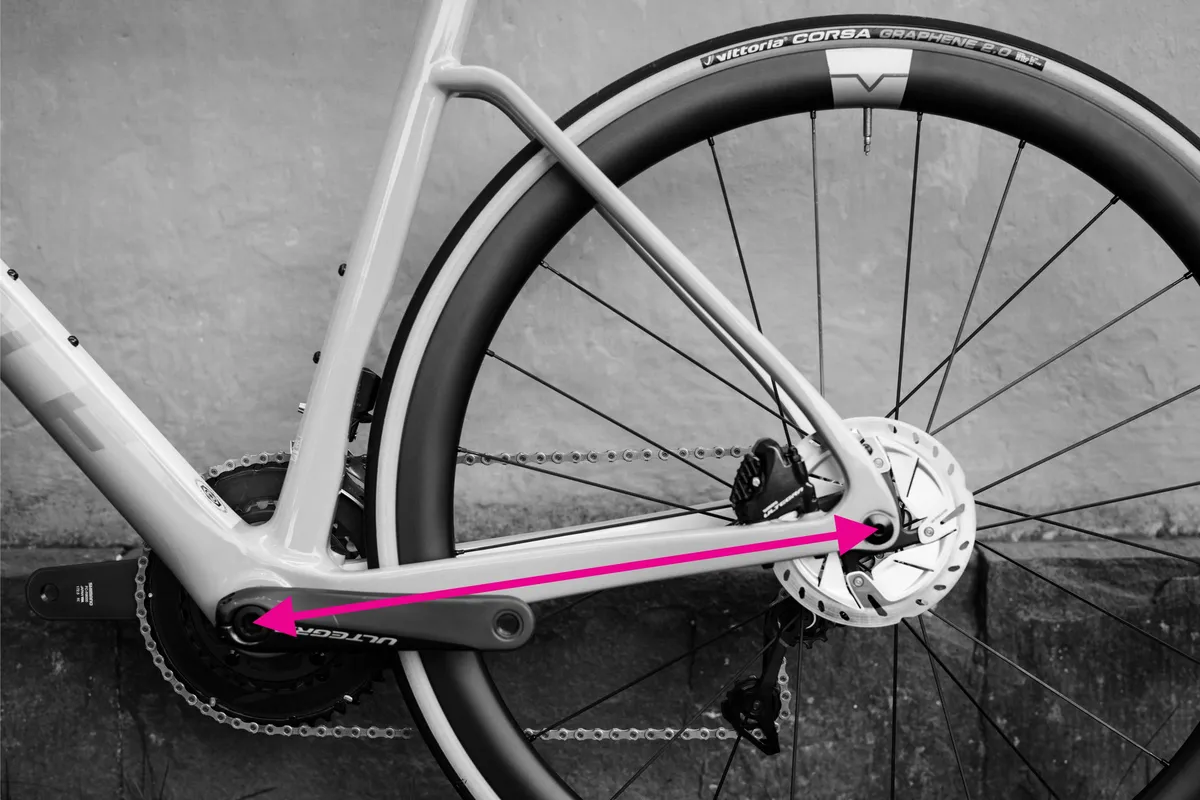
The length of the chainstays contributes to the overall wheelbase of the bike and, therefore, to its handling. It’s another area where bike designers need to balance competing demands.
Ideally, you’d keep the chainstays short on racier bikes to keep the wheelbase in check and for snappier handling, but the trend to wider tyres means that chainstays are getting longer, to provide enough clearance for the 28mm+ tyres now compatible with most race bikes.
Again, it’s not such an issue on more endurance-focused bikes where you want more stable handling.
Bottom bracket drop
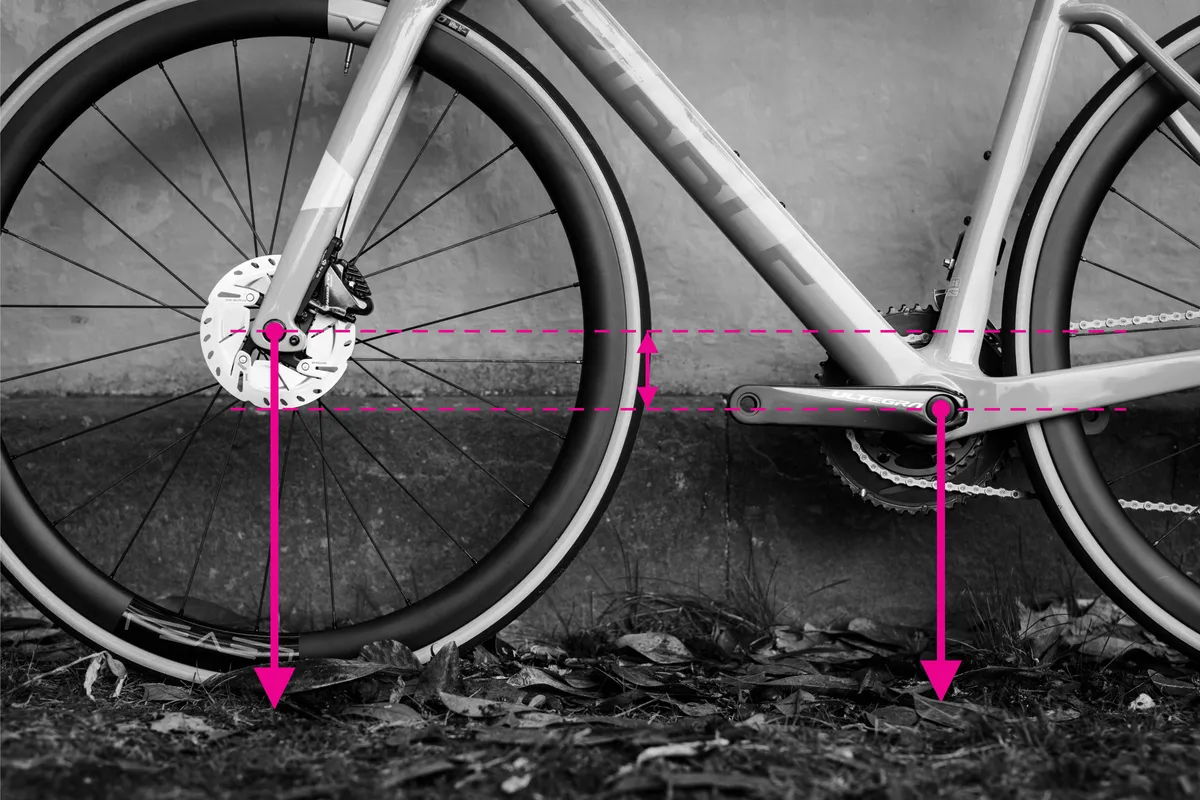
Bottom bracket drop is another of those cryptic measurements you’ll see on many geometry charts, and another that affects a bike’s stability.
The bottom bracket drop is the distance between the centre of the crank axle and a line drawn between the wheel axles.
A larger drop will put the pedal axle closer to the ground. This adds stability by lowering your centre of gravity, but reduces ground clearance. Less ground clearance in turn means the frame is more likely to bottom-out over obstacles – a more significant issue for gravel and cyclocross bikes.
But even for a road bike, it’s something to be juggled; too great a drop and the pedals are more likely to ground if you’re making fast turns. You’ll also lose agility.
Bottom bracket height

Sometimes you’ll see bottom bracket height quoted rather than drop. Measured vertically from the ground, this is essentially a different way of expressing the same measurement.
However, bottom bracket height varies depending on the size of the wheels and tyres fitted to the bike, whereas drop is a fixed number determined by the frameset’s geometry.
Front-centre

You’ll occasionally see ‘front-centre’ quoted on geometry charts, which is the distance between the crank spindle and the front wheel hub (sometimes measured horizontally from the axle to an imaginary vertical line passing through the bottom bracket).
Front-centre has an impact on a bike's handling and, crucially when it comes to sizing, can affect toe overlap.
Tyre clearance
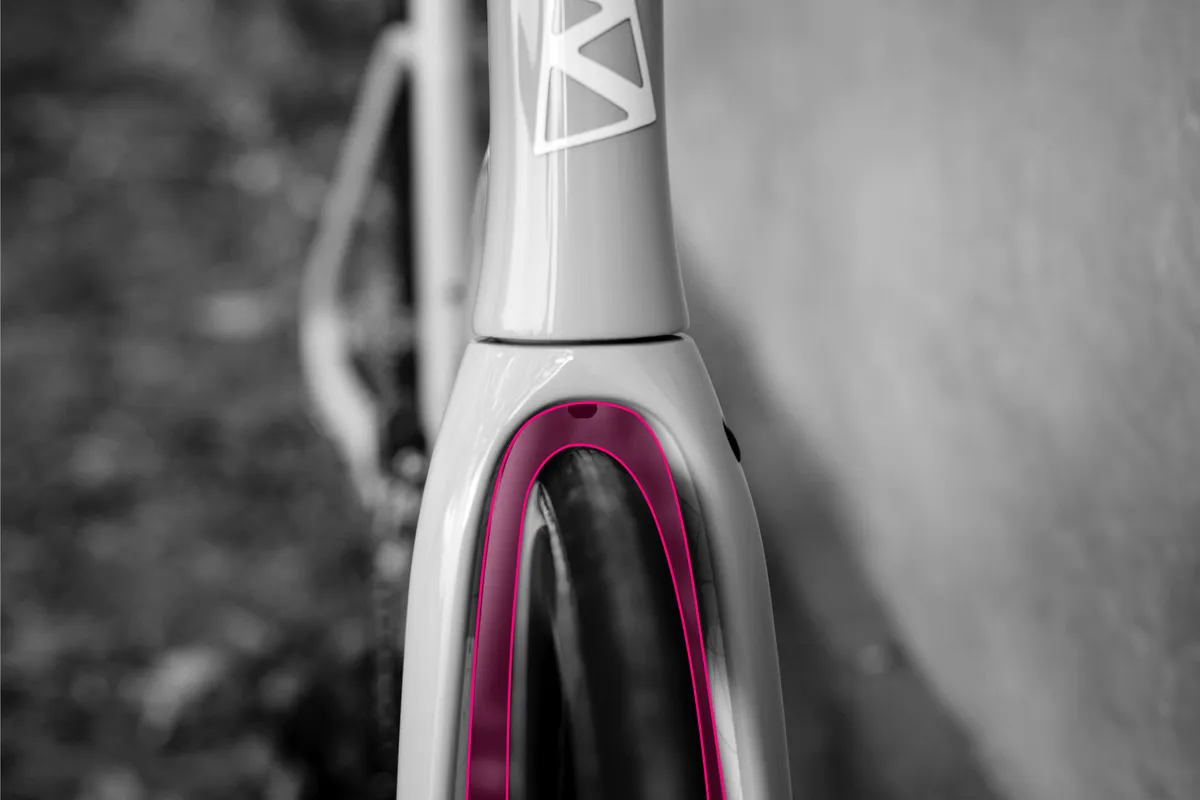
Not strictly part of your bike’s geometry, you’ll nevertheless see plenty about tyre clearance on manufacturers’ sites. That’s because road bike tyres are getting wider and you’ll want to make sure you’ve got space to fit your tyre of choice.
Even a race-oriented bike will often come with 28mm tyres, up from 23mm just a few years ago, and many endurance and gravel bikes will go much wider.
Look for ample clearance if you want to fit wide tyres to up your comfort levels and grip on looser surfaces.
It’s another area where road bike design has changed radically in the last few years. Mason points out that the advent of disc brakes on road bikes and single chainring groupsets has really changed how much clearance a bike can offer for wider tyres, and subsequently what a modern road or gravel bike is capable of.
Standover
Standover measures how far off the ground the top tube is. There isn’t a completely standardised method for measuring it, but it’s usually taken to be either just in front of the saddle, or at the midpoint of the top tube.
You’ll want a frame with enough standover that you can comfortably put both feet on the ground when you’re not sitting in the saddle, so standover can be an important measure to consider when determining what size bike you need.
On modern compact frames with a sloping top tube, standover tends to be generous enough not to be a factor in choosing a bike, but it remains relevant with some designs, and is a particular issue if you have relatively short legs compared to your height.
